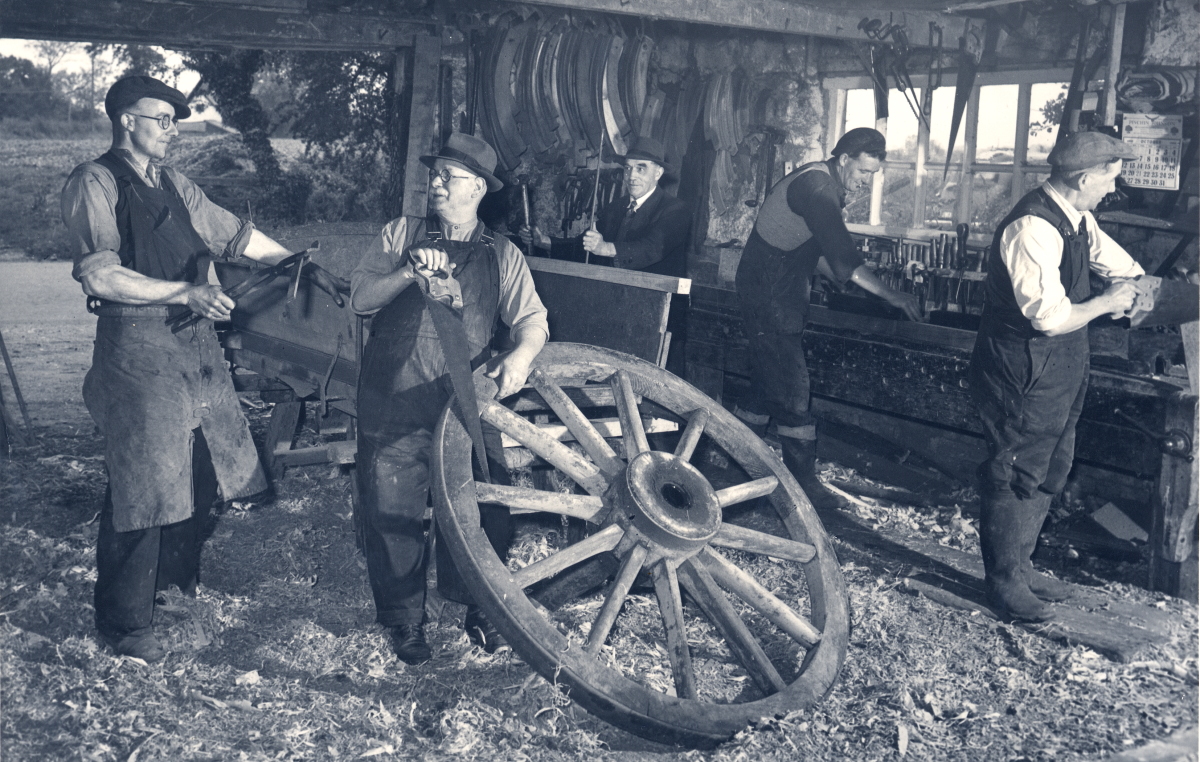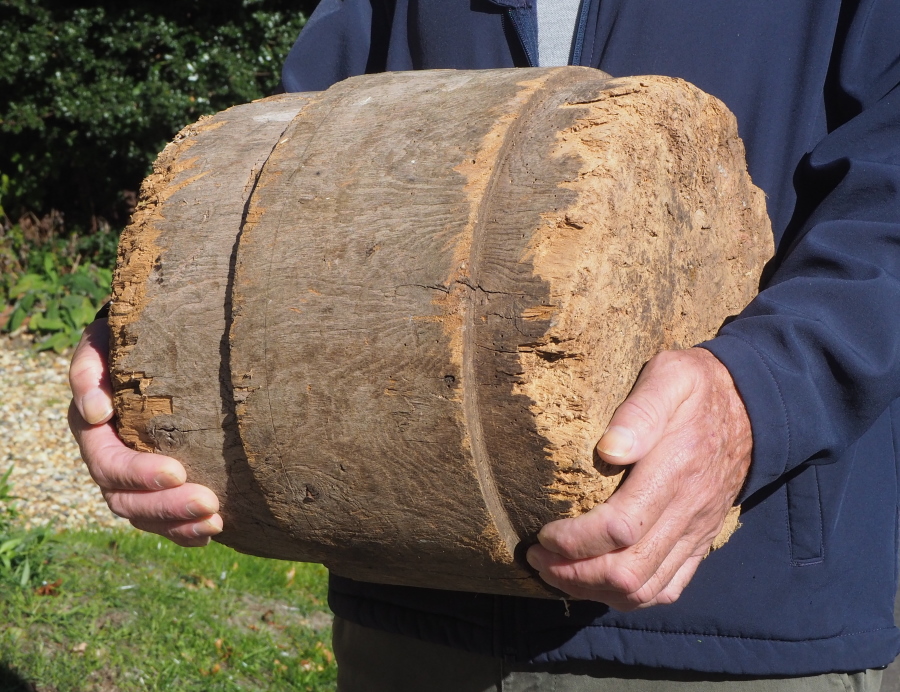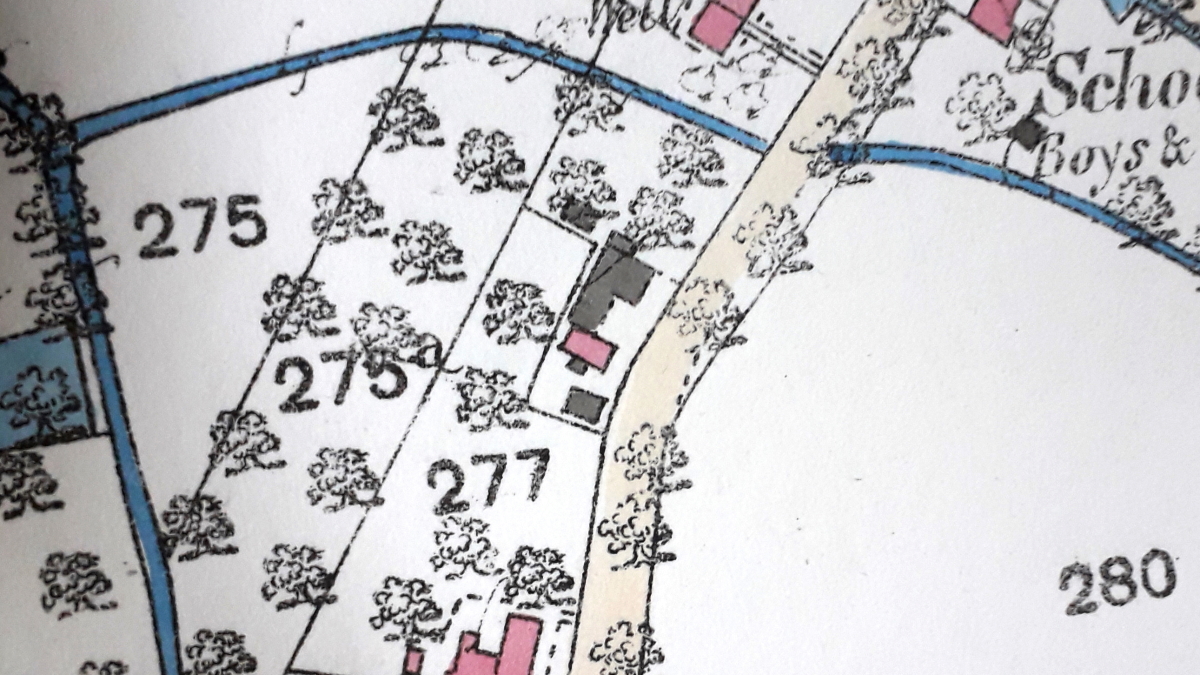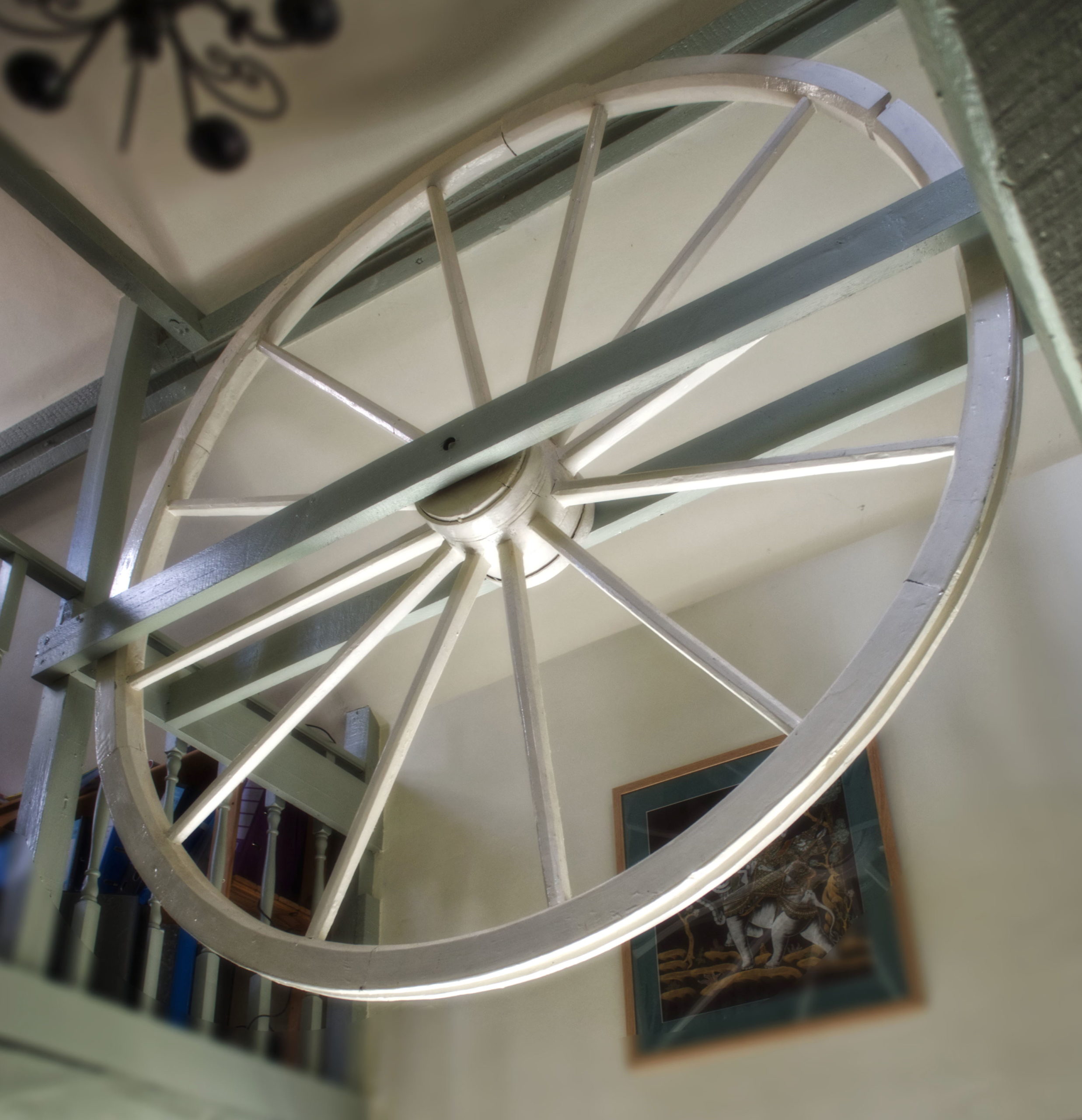
Blacksmith’s apprentice describes the different wood used in a wheel
Here is a locally turned wheel hub which was never completed. It is made from elm; the next stages would have included the chiselling of the “holes” around the central part where the spokes would have been inserted.
Once the property of local wheelwright, Stanley Goodrum, this unfinished hub has now spent many decades as a chopping block!

Blacksmith’s apprentice helping at the wheelwright’s
The wheelwright profession was the cornerstone of transportation in both town and country for many hundreds (perhaps, thousands?) of years. Before the railway or the modern motor vehicle, wooden wheels were the only way to move goods around. Each part of the wheel is constructed from a particular type of wood: oak for the spokes – giving stiffness, elm for the hub as it doesn’t split and ash for the rim as it introduces some spring which softens the ride. A tight fit is vital for both the structural strength and life of the product.
Since the industrial revolution, the metal tyre has taken the form of a continuous metal band being fitted around the circumference of the wheel. This iron band, which needs to be manufactured to a precise size by the blacksmith, is first roasted over a hot open fire. The complete process requires a close working relationship between all concerned to ensure a perfect fit over the wooden rim once the very hot tyre has shrunk after been quenched with water. When the hot tyre is first fitted, a controlled amount of initial scorching of the wooden rim improves its permanence. The whole process of wheel manufacture was nothing without the combined skills and experience of blacksmith and wheelwright working as a team.
Whilst there are still wheelwrights with these skills, they are very thin on the ground!
Samuel Day & Alfred Quantrell

The grey shaded buildings may well be wooden sheds – whilst the pink shading is believed to denote masonry (Clay-lump) construction.
Samuel Day was a carpenter and wheelwright in the first half of the 1800s. His premises and business, in Ashwellthorpe Road, were acquired by Alfred Quantrell in 1865.
These premises were still being used as a workshop until the 1950s. Coffins were one of the longstanding products. Over the years the demand had never gone out of fashion.
This wooden wheel is actually a fly-wheel and was part of a woodworking lathe. It is still secured to the beams in Lamp Cottage, Ashwellthorpe Road, which used to be the central area within the Samuel Day / Alfred Quantrell workshop.
Whilst a modern road-wheel has a tyre around its circumference, this wheel has a groove. This groove would have seated a rope or leather band which would have also wrapped around a small wheel on the central shaft of the nearby lathe. The turning of the flywheel would rotate the piece of wood being machined.

Carpenters versus Joiners
Robert Dennis Day worked with wood. However he described himself as a “joiner”, not a carpenter. What was the difference? Well, historically, joiners stayed within workshops and created stand-alone items such as tables and chairs. A carpenter would often work “on-site” – so they would construct wooden floors and ensure that door and window frames would fit their locations.
True to his job title, Robert Dennis Day’s ledger describes his woodworking activities as mostly making (and repairing) furniture.
Other Village Carpenters
Within Wreningham, Basil Day’s book, has listed a large number employed as carpenters – and wheelwrights.
In 1896, one of the village carpenters, George Bloom – who lived at High Common, created a local difficulty; a newspaper describes how he brought a case at the County Court against the recently formed Wreningham Parish Council for not providing him with a free 15 hundred-weight of coal. (That’s 3/4 of an imperial ton, for those who don’t know.) George Bloom said he “had a right to it” under the terms of the village coal charity – the original name of the present-day village Fuel Trust.
Robert Dennis Day, who had been summonsed, told the court that George Bloom had accused the wrong people and helped the judge by providing a copy of the trustees’ rules. He also described George Bloom as a tradesman – and not a labourer as he had claimed. The judge looked at the rules and determined the decision was up to the trustees, not him, and found against Mr Bloom. Presumably, George Bloom then got back to his carpentry?
